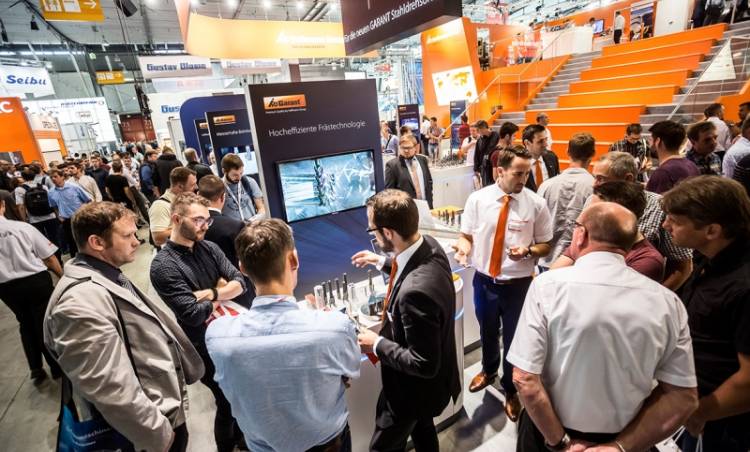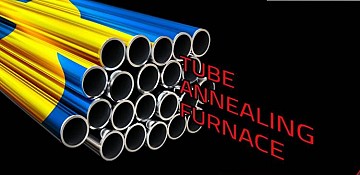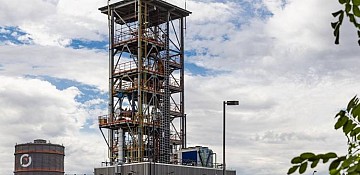
The metalworking industry will meet in Stuttgart from 13 to 17 September 2022 at AMB 2022, where business partners from all over Europe will gather once again. A very good reason to get to know the trade partners of more than 100 exhibitors from the VDMA “Precision Tools” and “Measuring and Testing Technology” trade associations.
Disruptions to the supply chain, part defects and stagnating production for customers are the main challenges that many companies are currently facing. There is also a growing shortage of materials and staff, as well as serious cost increases for raw materials, transportation and energy. However, sales of machining and chucking tools rose by double digits in 2021. This was mainly due to international business, which was a driving force for many manufacturers. On the other hand, there was significantly weaker growth in sales in Germany.
Overall, the economic situation of the tool industry recovered in 2021 in the five key European countries, which are also represented by the ECTA (European Cutting Tools Association), albeit to varying extents. The aforementioned problems and subsequent pandemic waves slowed recovery somewhat more than hoped, dampening further optimism. The European tool industry increased international shipments of machining tools by around a fifth. Trading with each other remained a priority. This grew by 21 per cent, which is slightly above average. This indicates that 60 per cent of all European tools were bought by customers within the 27 EU nations.
Italy as a key trade partner
In Germany, production in the automotive industry – an important sector for machining – was below expectations. In contrast, the demand for tools in areas such as mechanical engineering increased. The picture was similar in Italy: Attractive special write-downs led to progress for suppliers of industrial equipment in the tool business, while car production stagnated.
The monthly average and total number of precision tools imported from Italy remained almost the same as in the previous year, only increasing slightly. Overall, this increased by 12 per cent; Germany having imported around €53 million worth of mould-making tools. The proportion of tools from the moulds sector increased from €44 million in 2020 to about €50 million the following year, with injection moulding and similar tools following the same pattern, increasing from €22 million to around €27 million.
This means that the three top positions are still held by tool construction and mould-making products. Other products include taps, burrs and chucking technology for tools and parts. On average, imports amounted to around €17 million per month – roughly half the amount supplied to Italy.
Shipments of German tools to Italy were up 24 per cent in 2021. In the same year, a monthly average of almost €30 million of tools were supplied to partner country Italy. The upswing after the sharp decline in the first half of 2020 due to the coronavirus thus continued into 2021.
High-precision milling tools remained by far the most important precision tool export for Germany. Tool holders took second place in 2021, while supply of burrs and drills showed clear improvement again.
Ups and downs in Spain
Although Spain recovered well, particularly in the first half of the year, the semiconductor shortage and the recent spike in electricity costs contributed to the country’s slowed production and therefore customer demand for tools. The Spanish automotive industry was also particularly disappointing.
Shipments of German tools to Spain were up by five per cent in 2021. In the same year, a monthly average of €12 million in tools was supplied to the partner country. For this reason, recovery began to progress slowly in 2021 following the severe decline in the first half of 2020 as a result of the Covid-19 pandemic. In the precision tools sector, the most important German goods exported to Spain comprised high-precision milling tools, injection moulds and tool holders.
A slight decline in imports into Germany from Spain was recorded in 2021. They were three percent lower. The three most important product groups are encompassed by tool construction and mould making. Other products such as drilling tools, clamping technology for tools and milling tools were also supplied, but only to a limited extent. Total imports amounted to around €4 million per month on average, i.e. about one third of the volume of Germany’s shipments to Spain.
Growth in neighbouring France
In France, the second-largest EU economy, trading in precision tools and clamping devices was much more widespread in terms of sales than in Italy or Spain. The important business with the aviation industry slowly recovered in France, while production in the French automotive industry remained steady at the same level as the previous year.
Shipments of German tools to France were up by ten per cent in 2021. In the same year, a monthly average of €25 million in tools was supplied to the neighbouring country of France. For this reason, recovery showed good progress in 2021 following the severe decline in the first half of 2020 as a result of the Covid-19 pandemic. In the precision tools sector, the most important German goods exported to France comprised high-precision milling tools, moulding and punching tools, as well as burrs and tool holders.
Strong growth in imports into Germany from France due to one-off effects was recorded in 2021. They grew by 40 per cent. For drilling tools and milling tools in particular, there was strong growth from a low level. Total imports amounted to around €5.5 million per month on average, i.e. about one fifth of the volume of Germany’s shipments to France.
Virtually all ECTA countries had a good start to the year
Switzerland, where there has been an increase in demand for tools in almost all customer segments, showed the strongest development within the ECTA network last year. In the United Kingdom, logistics issues curbed recovery in the manufacturing industry. Despite its importance, car production once more remained significantly behind the previous year here.
For the foreseeable future, any further recovery will not take place as rapidly as hoped owing to the effects of the Ukraine war and restrictions put in place due to the Covid-19 pandemic. All in all, however, the market experts at VDMA have confidence in an optimistic outlook for Europe and a good market environment for AMB 2022. And finally, almost all ECTA countries had a positive start to 2022.
Meeting place for VDMA members
The AMB is one of the most important international trade fairs for metalworking companies. This year, more than 100 exhibitors from the VDMA “Precision Tools” and “Measuring and Testing Technology” trade associations will be represented at AMB, primarily from the machining, clamping technology and length measurement technology sectors. As a result, they are one of the largest exhibitor groups.
VDMA Technology Forum in Halle 1
This year, the VDMA Technology Forum is the place to be for manufacturing experts. On four of the five days of the trade fair, on 13–16/09/2022, VDMA member companies and development partners will show their innovative solutions from the machining, clamping technology, measurement and testing technology, digitalisation and research sectors in motivating lectures at the Technology Forum (VDMA stand B50, Halle 1). For the first time, the Forum will also offer young start-ups the opportunity to demonstrate their potential to the metalworking industry in pitches and cooperation agreements.
World Media Group (WMG) Haber Servisi
 Industry News (English)
Industry News (English)
 Industry News (English)
Industry News (English)
 Industry News (English)
Industry News (English)